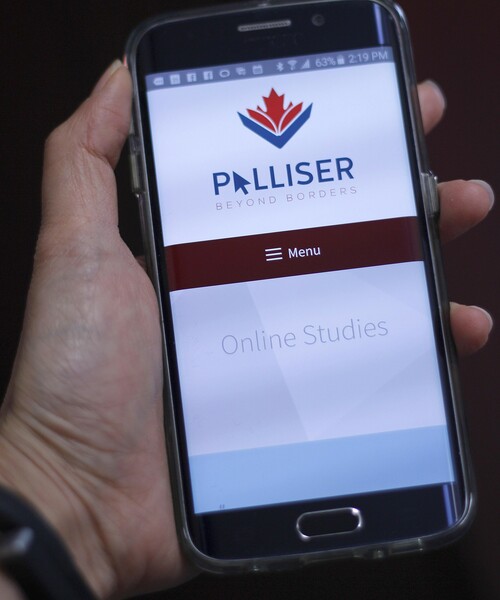
A Government of Alberta cell phone plan shows the power of bulk buying at work, saving Palliser Regional Schools thousands of dollars in the first year of implementation.
Associate Superintendent (Human Resources) Ken Garinger, who oversees technology for the school division, said Palliser saved about $67,000 on cell phone bills in 2014-2015, compared to 2013-2014. In 2014-2015, the first year of being on the government plan, most Palliser phones were more than three years old.
The savings in 2015-2016 will decline somewhat as new phones were leased this year. Even with the lease costs factored in, overall cost is still expected to be reduced by a conservative estimate of about $120 per phone, or about $17,000 a year.
Palliser has about 140 cell phones issued to staff this year, including Central Office administration and key support staff, tradespeople who maintain buses and buildings, technology services staff, principals, vice-principals and counsellors. Phones are issued to staff who may need to be mobilized at a moment’s notice, Garinger said, as well as to Hutterite Colony teachers, whose cell phones are the primary and usually lone communication tool in the school.
He said staff aren’t expected to maintain a separate cell phone for personal calls. Instead, Palliser encourages staff to use the division phone as their primary device so it’s always at hand should the need arise. During a recent weekend when a student was killed in a motor vehicle collision, staff from various parts of the division were mobilized on Sunday to be ready to support the grieving school community on Monday morning. It’s just one example of how the phones are used outside regular business hours, Garinger said. The phones are a safety tool as well in a division as large as Palliser with Central Office staff travelling from Coaldale to Calgary to work in schools.
The strength of the government plan is it caps key costs. Local anytime minutes, for example, cost one cent per minute to a maximum of $10 a month, even if a user is on the phone all day every day. Likewise, Canada-wide long distance is charged at two cents a minute, but no matter how many minutes are used, the bill is never more than $5. Data and text messaging charges are also capped, so the most a user is likely to be billed for regular use in Canada is about $44.50.
Garinger said the plan also saves time in arranging for roaming packages should the user be heading to the United States. U.S. long distance and texting is built into the plan. Users are always still encouraged to turn off data when outside Canada.
“It’s a great plan and has produced real savings in expenses and time for our division.” Garinger said.
Savings compared to the previous plan could grow in year three of the lease when Palliser will have the option to buy the phones outright, extend the lease or move to new phones. The reliability of the devices will be a key factor in the decision as the phones enter their third year of life in 2017-2018, Garinger said. The division deploys a mix of iPhone and Android devices.
The service provider monitors accounts for unusual spikes in data or other usage and can intervene on Palliser’s behalf if data use suddenly rockets. The accounts are also monitored internally for spikes in usage but no unexplained spikes have occurred, Garinger said.
In July 2014, the division paid out what was left on its previous contracts for mobile phones but the $67,000 in savings is over and above that one-time expense. Even with an increase in division cell phones related to growth (Palliser now has more than 1,000 full- and part-time staff), spending on mobile phones is expected to be less overall in 2015-2016 than in 2013-2014.

